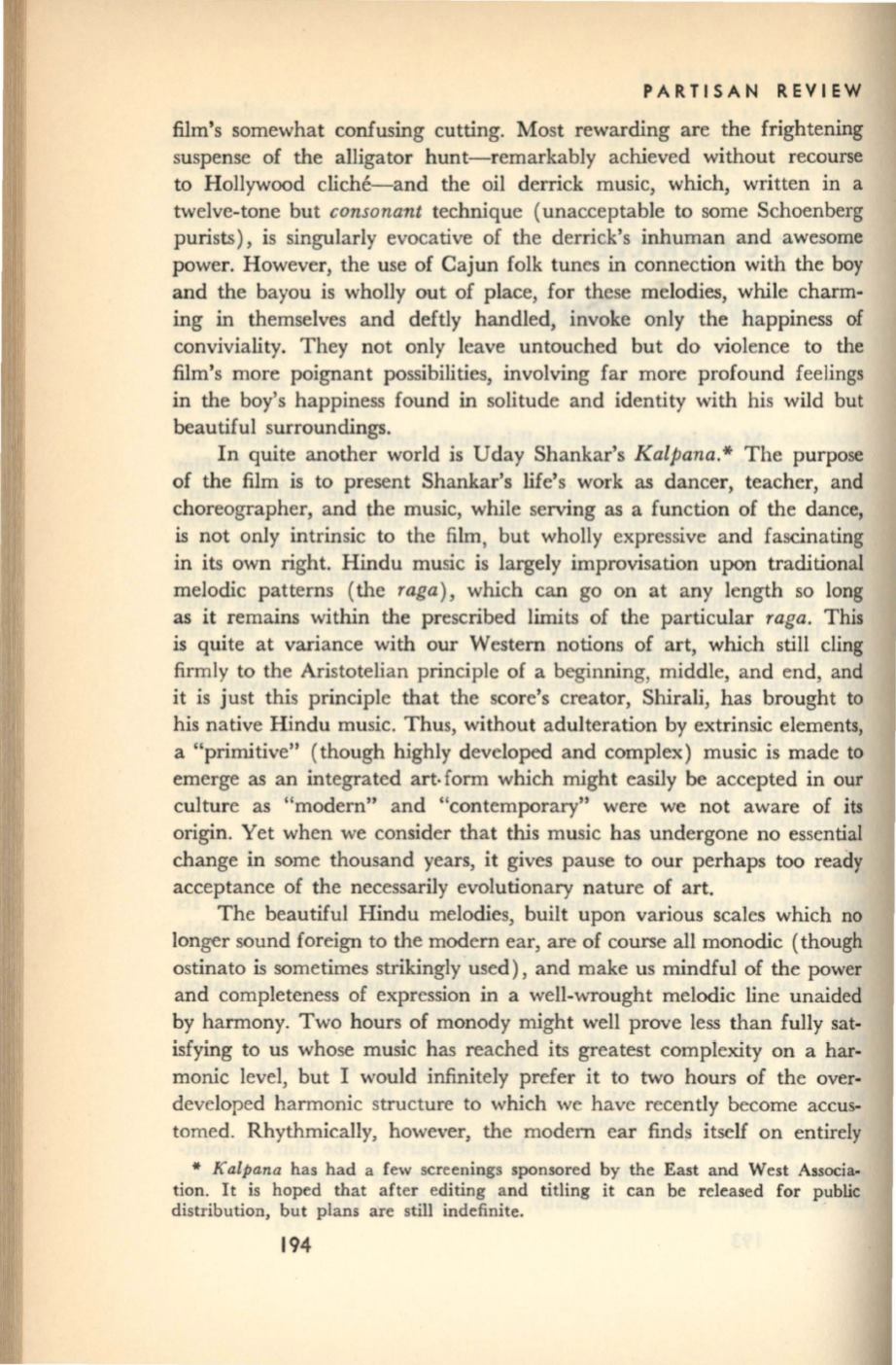
PARTISAN REVIEW
film's somewhat confusing cutting. Most rewarding are the frightening
suspense of the alligator hunt-remarkably achieved without recourse
to Hollywood cliche-and the oil derrick
music, which,
written in a
twelve-tone but
consonant
technique (unacceptable to some Schoenberg
purists),
is
singularly evocative of the derrick's inhuman and awesome
power. However, the use of Cajun folk tunes in connection
with
the boy
and the bayou
is
wholly out of place, for these melodies, while charm–
ing
in themselves and deftly handled, invoke only the happiness of
conviviality. They not only leave untouched but do violence to the
film's more poignant possibilities, involving far more profound feelings
in the boy's happiness found in solitude and identity with his wild but
beautiful surroundings.
In quite another world
is
Uday Shankar's
Kalpana.*
The purpose
of the film
is
to present Shankar's life's work as dancer, teacher, and
choreographer, and the music, while serving as a function of the dance,
is not only intrinsic to the film, but wholly expressive and fascinating
in its own right.
Hindu
music is largely improvisation upon traditional
melodic patterns (the
raga),
which can go on at any length so long
as it remains
within
the prescribed limits of the particular
raga.
This
is quite at variance
with
our Western notions of art, which still cling
firmly to the Aristotelian principle of a beginning, middle, and end, and
it is just this principle that the score's creator, Shirali, has brought to
his native Hindu music. Thus, without adulteration by extrinsic elements,
a "primitive" (though highly developed and complex)
music
is made to
emerge as an integrated art· form which might easily be accepted in our
culture as "modern" and "contemporary" were we not aware of its
origin. Yet when we consider that this music has undergone no essential
change in some thousand years, it gives pause to our perhaps too ready
acceptance of the necessarily evolutionary nature of art.
The beautiful Hindu melodies, built upon various scales which no
longer sound foreign to the modern ear, are of course all monodic (though
ostinato
is
sometimes strikingly used), and make us mindful of the power
and completeness of expression in a well-wrought melodic line unaided
by harmony. Two hours of monody might well prove less than fully sat–
isfying to us whose music has reached its greatest complexity on a har–
monic level, but I would infinitely prefer it to two hours of the over–
developed harmonic structure to which we have recently become accus–
tomed. Rhythmically, however, the modern ear finds itself on entirely
*
Kalpana
has had a few screenings sponsored by the East and West Associa–
tion. It is hoped that after editing and titling it can be released for public
distribution, but plans are still indefinite.
194


